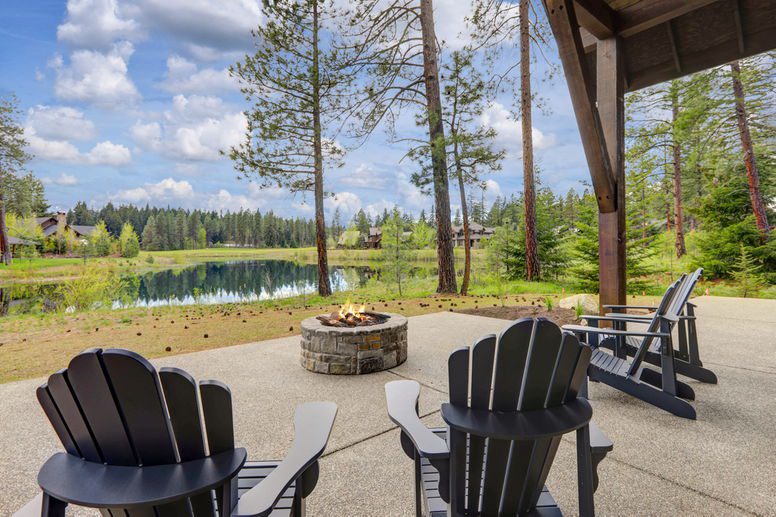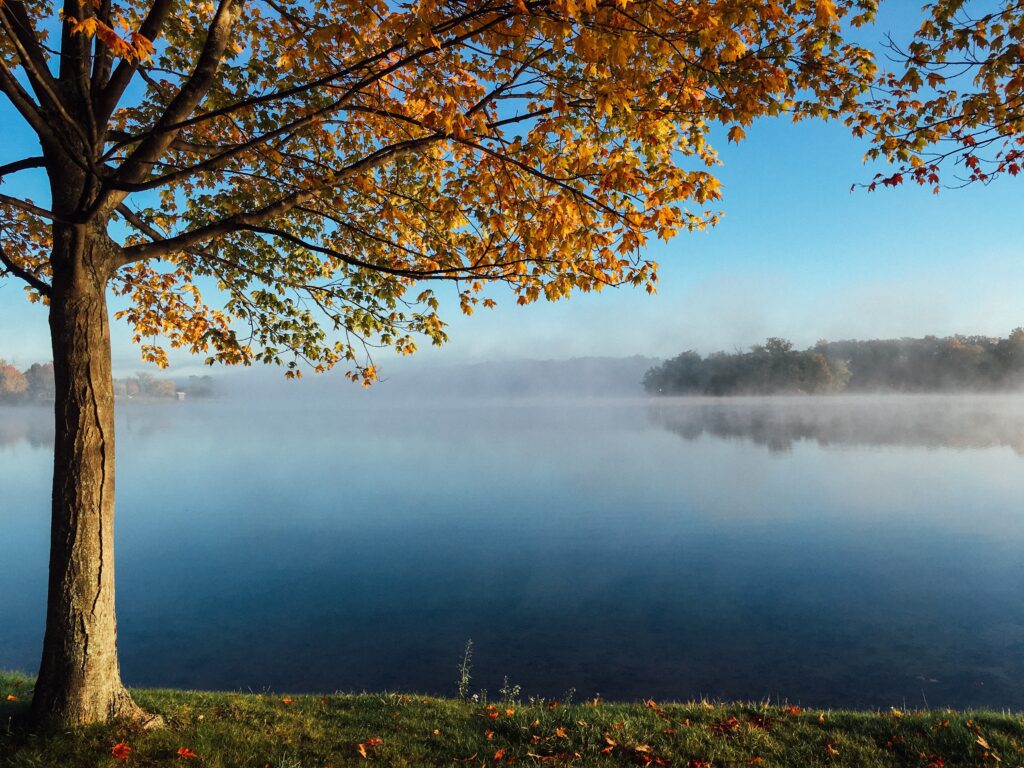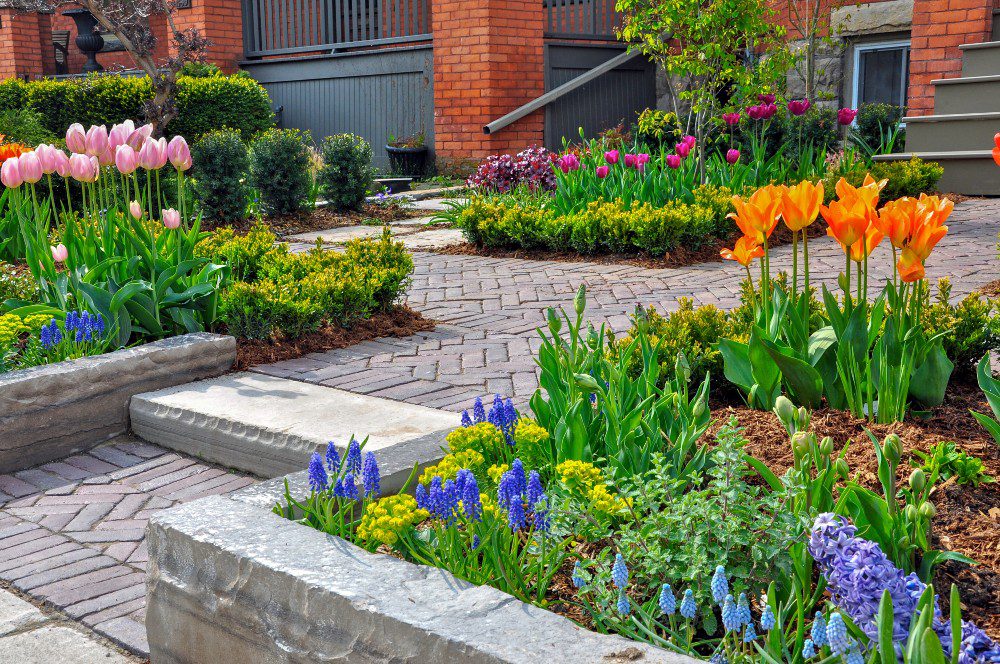
Landscape design is a practice that seldom follows a predictable path. This is true even for those schooled in a traditional landscape architecture program.
There are principles that most adhere to, but the real magic is often uniquely personal, distilled from years of life and client experiences. There are designers with backgrounds in science, engineering, and the arts, all of them accomplished.
You should take some of this to heart when working with a landscape designer. Your thoughts and ideas, when blended with others, will make it your own, and quite possibly, more than anyone could have imagined.
What follows are 10 of our favorite landscape design ideas that we’ve learned colleagues, clients, and notable masters such as Jens Jensen, best known for the prairie style of landscape design where earth and sky meet on the far horizon.
#1. Pull Back the Edges
Every property has its limitations, typically determined by the legal limits of the property. This may partly explain why many landscape designs either avoid the property’s edges or push them to their limits.
Jens Jensen was known for reimagining the landscape from the edges. He believed that the edges of the landscape design, if reimagined without its arbitrary limitations, could become one of the strongest elements of the design.
A rectilinear property does not have to conform to that shape. Pulling back the edges to create a curvilinear design, as one example, moves the eye throughout the landscape. This visually opens, stretches, and reshapes the space to better accommodate the client.
#2. Live Inside Out
Everything we love about outdoor living becomes more exciting when we find ways to bring the inside out. Barbecues and alfresco dining have become the most requested homeowner experiences. Because many homeowners do not have the luxury of working with architects and interior designers, these needs are often fulfilled by the landscape designer.
If your home has an above-ground deck, there is valuable space beneath it. This space can be transformed into outdoor and indoor living space that will enhance your lifestyle and increase the value of your home. An underdecking system that prevents water intrusion will turn it into a multi-functional 3-season room.
#3. Frame the Views
Your home may not have expansive lakefront or sunset vistas, but every home has at least a focal point that merits greater focus.
Framing views may require screening other views where the eye naturally wants to go. If there is an objectionable view, it will become a distraction. Rather than obscuring it with a fence or hedge, find ways to work with the edges.
Pulling the edge forward with interesting foreground plantings in front of a group of larger screening plants. Design this in a way that naturally guides your eye around it to a more favorable view. Introduce additional plantings to frame that view to give it greater emphasis.
Control is a strong word to use when discussing landscape design, but it plays an important role in enhancing the enjoyment of your outdoor spaces.
#4. Define Vertical Spaces
If you’ve spent some time inside home with twelve or fourteen foot ceilings in multiple rooms, you probably have an appreciation for defining vertical spaces. There is no question that soaring ceilings raise the energy level of a room. This can make it somewhat unsettling at times.
When you are outside looking for a cozy place to settle down and read a book, doesn’t that space beneath a shade tree feel more appropriate than in the middle of a sun-drenched terrace? Vertical elements such as the pergolas and the canopy of majestic shade trees define vertical spaces, making them more appropriate for specific activities

#5. Follow the Sun
Understanding your property’s sun exposure throughout the seasons is invaluable. Pay special attention to areas that receive full and limited sun exposure, because most ornamental plants perform best with partial exposure.
Areas that receive limited sun can be challenging. There will be a tendency for them to have persistent moisture. This can encourage plant diseases and the growth of mosses or mildew on hardscape surfaces.
Northern regions such as Minnesota can expect a greater variance in sun exposure with the time of the year than in southern climates. Taking this into account will inform plant selections, but after that, these plantings will let you know soon enough if they are happy in their environment.
#6. Let Go of Perfection
Nature’s beauty is reflected in its imperfections, such as a tenacious tree growing sideways from its base on a rocky shoreline. When embraced, these imperfections give landscapes a signature style that cannot be matched.
Scrubbing the time-worn patina from a bluestone patio is almost criminal. This imperfection is what makes it stand out from its man-made counterparts, at least for people with a discerning eye.
Letting go of perfection is the surest path to attaining a landscape that requires moderate to minimal maintenance. It also makes for healthier plantings, especially turfgrass lawns. Less mowing and fewer pesticide applications not only saves money, it also encourages a more self-sustaining lawn.
#7. Don’t Forget the Nighttime
Until you start planning for the nighttime you may not realize that many flowers close during the evening hours.
Common blue flowering Morning Glories, Ipomea purpurea, would not be showy in an evening garden, especially because the blooms close at dusk. However, the white flowers of its cousin, Ipeomea alba, better known as the Moonflower, make for a beautiful display that lights up the night.
Tropical water-lilies are another example of night-blooming plants. They typically open at dusk and close in the early morning hours. When you combine this interest with the activity of tropical fish in your backyard pond, this night-blooming event can become a celebrated one to share with the family.
#8. Follow the Rule of Three
Grouping three objects together always looks harmonious because there is a symmetrical and asymmetrical balance.
Even numbered groupings tend to signal geometric shapes with hard edges, squares and rectangles, for example. Whereas, odd numbered groupings of three, five, and so on tend to form organic shapes that mirror Nature’s own handiwork.
The eye is forced to move around when it encounters three objects. Movement is energy that stimulates the senses. What is pleasing to the eye is what pleases the mind, body and soul.

#9. Color with Care
Color is the one design element that can make or break a landscape. The wrong color combinations or too much color can assault the senses. Conversely, not taking any chances with color can be as uninspiring as a model home whose walls and furnishings are intended to appeal to the largest audience.
Dark colors make objects recede, and lighter colors bring them forward. In the unlikely event that you want to make a space appear smaller, you will want to bring in sufficient light and use lighter and brighter colored plantings and hardscapes.
Obviously, sun-drenched outdoor spaces are opportunities for being bold in the use of color.
10. Find Meaningful Things
Every landscape tells a story, and you can make it your own by introducing elements that are meaningful to you and your family. Plantings that remind you of your childhood home are a perfect example.
Did you honeymoon or celebrate your wedding anniversary at a charming Cape Cod beach house? You can relive those memories by incorporating key elements into your landscape design. This could be as simple as a hammock for leisurely enjoying the soft summer breezes.
Closing your eyes, you can transport yourself back in time by imagining the soft ocean breezes of the Cape.
Architectural Landscape Design: Helping Homeowners Enjoy Better Living
Here at ALD, our top priority is creating living spaces that are right for you. Our landscape design team will work with you from concept to construction to create the right landscape for your personal needs. Contact us today for a free consultation to explore your next outdoor living project.
